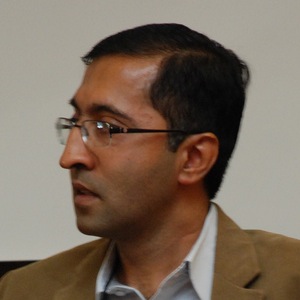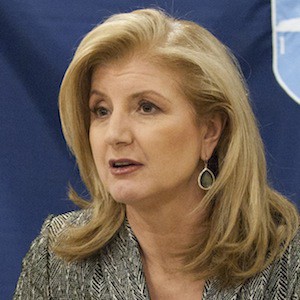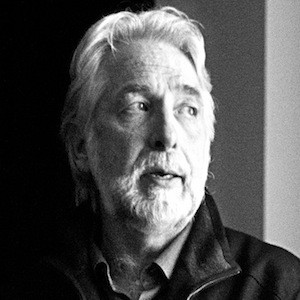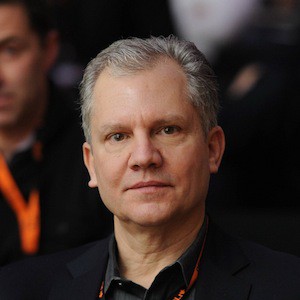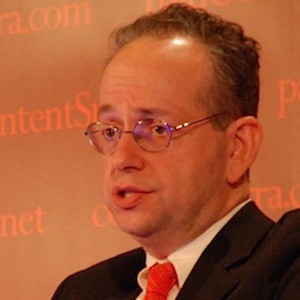Martin Nisenholtz: We’re here on April 1st, 2013 at Google with Krishna Bharat. Krishna, let’s just simply start with a very brief history because you don’t come to this through journalism, I don’t think. You’re a technologist.
Krishna Bharat: Exactly. But even though I’m a technologist, before I became a technologist I was reading news.
I grew up in India. In India in the ’80s, late ’70s, there weren’t that many sources of journalism but we had enough. We had our local sources. We had television. And then we had the BBC, Voice of America, and we had all these magazines.
I was fortunate enough to have not only a collection of these. My father was in the government so he used to get every single publication. But also, I had a grandfather who was obsessed with radio. Every four or five hours he would actually listen to the world news.
He was a wonderful person to be with, so I would end up consuming a lot of the same. First, reluctantly then afterwards, actually, I loved it.
Every time there was a big event in India, I would sense that there was all this national pride and politically correct reporting that’s happening in the country, but when I was at the BBC and Time Magazine, I had more license to comment on those things.
For me, it was actually important to read these multiple sources. I want to mention that because going in, coming to the US eventually to grad school, even though there were so many sources here, I felt there was a sameness here that annoyed me.
I tried to buy a shortwave radio so I would listen to the BBC because it was different. That was in the back of my mind.
I started out thinking I was going to do computer graphics, and then afterward, I got interested in other things, ATI and so forth.
But one of the projects I did when I was in grad school was on actually creating a personalized, interactive newspaper. So even though I was a technologist, my research said go off and build a newspaper. And this was 1993. There were almost no sources online, right? There were very few.
The News and Observer had the AP feed online, and I think Palo Alto Online was online. And I picked the News and Observer as the source from which I would get content to do my graduate student…
Martin: You were at Stanford?
Krishna: No. I was in Georgia Tech in Atlanta. And so we had a…
John Huey: The Raleigh…which News and Observer?
Martin: Raleigh News and Observer.
John: Raleigh News and Observer?
Martin: Yeah, it’s called Nando now.
Krishna: It was called Nando Times.
John: A Knight Ridder paper…well, not at that time. It later became a Knight Ridder paper.
Krishna: They didn’t have any images. They just had text. But it was formatted in the most boring way possible. Like, there’d be a sequence of links. You’d click on them, go get a page. And I wanted something that was two dimensional, that actually had allocated more space for the bigger stories and was attractive.
John: So you were at Georgia Tech in 1993, and your news source primarily is the News and Observer.
Krishna: Not really. Obviously, we had a lot of print sources. But for the purposes of my project, I needed to find an online source, and I picked this one because it had news. And I wanted this newspaper firstly to look like a real newspaper, and I wanted it to work for me and work differently for somebody else, because they had different interests. So I would fetch content. Every couple of hours I would then index the content, and then I would lay it out using Java, which had just been invented. And there was only one browser that had Java. And I would lay it out in Times New Roman, justified font, bigger stories had bigger font. And you had some controls that would tell you whether you wanted to see more of the more important stories or you wanted to get a larger selection of stories.
And you could also give feedback on stories. And you gave feedback implicitly by reading a story. Every time you clicked on a story, and it became bigger [indecipherable 04:13] in place. The system learned a little bit about your preferences, whether you liked baseball or you liked golf. And the next days, or next rev, would be more to your liking.
This was 1993. There weren’t any two dimensional newspapers anywhere, and there certainly weren’t any personalized newspapers anywhere. And it had a maximum readership of six because it was my lab and the people who knew me.
But I cut my teeth in journalism by understanding ranking from the ground up and thinking OK, what is their ranking, what should my ranking be, because I kind of want to respect their ranking, but I also have certain preferences. And where does the editor have latitude and how should they exercise that latitude in sort of helping me without pandering to me, you see?
So I learned a bunch of things, kind of with firsthand experience. But I didn’t have a lot of users, and you learn a lot more from having a lot of users. Then I went on to do web search. I was at Tech System Research Center doing web search, and I became interested in link based ranking. I met Larry and Sergey, and they persuaded me to come to Google. And I started in 1999.
And I helped start the research group here. I worked on web search for a few years. But then in 2001, I sort of got interested in news again, as did a lot of people, because of 9/11. I could talk about that, if you want.
John: Yes, because it’s a recurring theme in our interviews. It’s one of the there are several things that everybody agrees on, and everybody agrees that 9/11 was a seminal moment in the history of news and digital news.
Krishna: Right.
John: So do talk about that.
Krishna: Yes, I will. And so a little bit of personal background here. I was at a text retrieval conference and indexing conferencing in New Orleans along with lots of other researchers, and we were stuck there after 9/11 happened because the skies were closed. So I spent all my time trying to either find a flight back or follow the news and brainstorm about finding news with a lot of people. So I was stewing in it, in some sense. I came back here, and I found out what happened in that period. A lot of online news sites had kind of melted down, so Google had to host some of that content. They built a resource page. It was abundantly clear that, although we were a premier information company, people came to us and said give us information about what just happened now, and we didn’t have a good answer, right? We didn’t have a way of telling them…
You can always direct them to news sources and sort of hand off completely, but there’s also an obligation, I think, to help people understand the biggest story of the day and all the reporting that was happening on it. Because to me, I think that when I try to find the news subsequently, I found that in order to follow a human story, what had happened to the anthrax mailing stuff that was happening then, or what was happening in Afghanistan or what was the Arab reaction, I needed to go to many sources which I wasn’t personally familiar with, and I had to find the same story.
And it was frankly too exhausting to do. It was too exhausting to work the web, going to multiple sources and finding information if that’s what you sought.
So I felt that there’s got to be better way, a story first way, where you can actually find the story you care about and then very efficiently read the reporting, not just from the stories you trust and are familiar with, but also sources potentially you don’t trust or potentially sources that have the opposing view, or are closer to the story or are experts in the topic, right?
So I felt that that was kind of important. The other thing that had happened in the months leading up to that was a realization that our news search wasn’t working. So you would come to Google, and you would search for Bush, let’s say, and you would get a bunch of stories. And what Google knew was how to find trustworthy sources, which we were already good at.
So we looked at Page Rank, and we looked at the anchors coming in, and we would find you either a dated story, which had lots of links coming into it, or we’d find you a story that mentioned Bush a lot from a good source. And finding a story that has Bush a lot is not a guarantee of importance.
It just means it’s a long page, whereas the most important story that all editors would agree is important is not even being featured because we really aren’t tapping into the intelligence of editors. We’re not consulting editors in real time and saying what do you think is the most important story on Bush, right?
So I had two different problems, but they both had the same solution. The first problem said if a user wants to read multiple articles on the same story, there is no way. We should find a way. The second problem was we need to consult editors globally to find out what’s the most important to story to show about a topic like Bush.
It turns out that in order to poll the editors, you actually have to find, at least online, if you want to do it automatically, you need to find all of the publishing on the same story. You need to align it.
If there was a controversy about X, and “the New York Times” has two articles about it, and CNN has three articles about it, and “The Journal” has two articles about it, you need to assemble that collection.
Then you need to look at how that collection of articles on that particular story is growing, and that gives you two things. One is it allows you to present that collection to users, and say if you really care about gay marriage, here’s a collection of 500 articles.
Some of them from the best sources, some of them from sources you haven’t heard of that are very passionate it, that you should be reading.
Also allows you to understand how excited editors are about gay marriage right now. Whether they’re more excited about gay marriage right now than some other story. Since we can’t actually pick up the phone every few minutes and call all the editors in the world, the best proxy to that is just look at their publishing actions.
If you’re an editor who cares about gay marriage and you’ve allocated resources to actually cover it, and run a news story that’s not wire copy, then clearly it matters to you right now. Also where you position it on your front page matters too.
Understanding who’s published what, is it a duplicate or is it fresh, where is it positioned on the website, gives you a ton of information.
When I say you, I mean computers. A ton of information in real time about what I call aggregate editorial interest. Google News was born out of this insight.
September 11th happened, a month and a half later I had my first prototype. 150 sources. Either top international sources or top national sources crawled every 15 minutes or so and indexed, and presented in the form of pretty ugly UI.
Here’s the top story and here are the articles with the top story, here’s the second story and so forth.
We were a pretty small company at that time. I sent the demo out, I would say everybody in the company looked at it and played with it, and some people got very excited about it.
Because news was on everybody’s minds and they went to a couple of sources habitually, and now they were able to expand the range of sources and they were able to look at sources that had interesting viewpoints that they hadn’t encountered before. It was super efficient.
John: This is how far after 9/11, this is…
Krishna: This was early November, mid November. We moved really fast.
John: It was pretty fast.
Krishna: It was really fast. But it was a prototype. Good enough that people got a sense of what could happen. A lot of people got involved. Eric came to my office at some point and said, “This is very exciting, because this is a new way of looking at the news. This allows us to do something that I’ve always been wondering about how we would do globally.”
We have to serve consumers globally, and building newspapers everywhere does not seem like the right strategy. Staying true to our mission of making news accessible in this way, adding value to the industry.
He was excited about it, Marissa was excited about it, because she’d been talking to Larry about creating a new experience around news and now here was an opportunity.
By mid November we had an internal prototype, we decided to do two things. One is we wanted to make that prototype the basis for news search going forward, as I was saying earlier. Search for “Bush”, you got the article that mentioned Bush the most number of times.
Now I had a new way of figuring out what was the most important article about Bush [indecipherable 13:23] .
By January of 2002, we had news search upgraded to using my crawl and my clustering and so forth. This was because of Jeff Dean, who’s sort of the most remarkable engineer at Google, frankly. He’d been working on this real time indexing system and it needed a test case.
What a wonderful test case to try it on news, because news by definition is real time. He applied it to news and we found that we needed a ranking function, we wrote a new ranking function that was based on our understanding of how hot the story was.
Just like Page Rank was about how many pages linked to it, Story Rank was about how excited editors are about the story.
John: I’m going to do something we don’t normally do here. I’m going to ask Martin, who at this time is at the New York Times, what your reaction to Google News was when this…
Martin: At that time I was very excited about it, because it seemed to me that it was a way for a lot more people to experience the news and therefore to link to us. I had a very expansive view of how the Times should be treating the Internet. I was never one of these people that felt that we should lock down our links and not be open to the web, so I thought this was an opportunity to get more traffic.
I know the other side of it, which is that it tends to fragment the news environment and therefore for big news sources like the New York Times, it has a commodifying effect and sort of sits on top of all of these fragments.
I understand that, I get it, but I don’t think that’s a legitimate criticism. Mainly because technology is not something you just put your hands on top of. Now, other people have said you should lock down your links, you should not be open to Google News, and we can talk about that now.
Krishna: Let’s talk about that.
Martin: Yeah.
Krishna: Actually, I haven’t told you when we launched it that we could…When we finish this and then we’ll get into the ecosystem.
John: Oh, this was still in prototype.
Krishna: Yeah, no we’re still in prototype when we launched news search. News search allowed you to go and search for news and get not a single article, but a cluster of articles, and ranked based on aggregate editorial opinion at the moment. We launched an in house internal version of Google News which had 150 sources and a very simple UI. But it wasn’t until September of next year that we launched with 4,500 sources and we had to get images in.
We had to understand a lot of things. We had to understand firstly how to work with publishers, because until now the initial version was all search. In search, publishers understood what we were doing, we were in response to a query we were returning a link and that link was driving traffic to them.
It was the same thing that had happened since the days of Lycos and Infoseek and Altavista, and all of the others. Nothing had changed.
Google News, when we launched as a tab on our front page in September, broke with that paradigm. For the first time without a query, Google was providing a collection of results.
It’s true that we weren’t showing more content than web search was doing. But we were doing it in a query free way. One way to think about it is we were returning results with the query, “news.” What’s new? Come to Google and say, “What’s new?” That’s my question. Google comes back and says, “Biggest story of the day is a Texas DA was assassinated.”
Here is from Dallas Morning News or whatever. Here’s one from The Wall Street Journal. Instead of saying, “Sorry we don’t know.” Or returning to you an old article. We were transforming ourselves from just answering queries on specific topics to much more general topics. This was a new paradigm and it caused us to have to talk to all the top sources, initially, to explain what we were doing, under wraps.
There would be interstitials coming up and we had to come to an understanding that the first click from Google would not create an interstitial because that would ruin the experience. Once the top newspapers got it, everybody else wanted in. Most of the 4,500 sources that came in, came in because they wanted in, once they understood what was going to happen.
After that, we’ve grown from 4,500 to 50,000 sources. We’ve moved from one language and one global edition to 72 editions in about 50 languages or something. That paradigm has actually proved to be quite versatile.
John: So how many employees would be dedicated to Google News?
Krishna: If you ask how many employees are dedicated to Google News full time, it is a small number. But if you ask how many employees are working on stuff that makes Google news possible, it’s a much larger number. Because we build on top of very powerful machinery. The machinery that allows us to crawl the web in real time is not something that Google News, per se, maintains. The ranking and serving machinery is not maintained by us. If we were to build the service afresh, we would employ thousands of people. But we don’t. We’re building on top of the massive machinery that Google has put together.
John: You have hundreds?
Krishna: We don’t disclose numbers. The quid pro quo that mattered to content providers still is maintained here, in the sense that you participate in Google News voluntarily. You provide a small amount of content, the title and the snippet. Which could be topical, depending on what section it is. You get, in return for that, traffic. If that traffic isn’t acceptable, as quid pro quo, you can opt out. Every master in the world knows that it takes one line change on their robots.txt to step out of Google News. That’s the way it works. The fact is, for most of the links we show, we don’t even show the snippet. Because our design is such that we show a primary article and then a lot of other links. Some of them, we show a title. Some of them, we show just the name of the source. It’s really compact.
John: In fact, everyone wants to be that primary article.
Krishna: They do. We often had a situation where one part of the company was arguing that they should be the top link and the other part of the company was arguing that they shouldn’t be part of this at all. I wish they would resolve that conflict.
John: I was going to say, this brings us to News Corp.
Martin: No, but before we get there, my only issue with Google News was one that had to do, sometimes, with the quality of the computer science underneath it. What I found, at least at the outset, was that there would be a story about New York, for which we would be clearly the definitive source, or maybe even The Daily News would be the definitive source. And yet the top link would be a paper in Hawaii or in California. I never quite understood why that happened. It might have had to do with recency or the way the AP was publishing or some of the wires. Can you explain? You may have already corrected that many years ago. But could you explain why that was happening, at least at the outset?
Krishna: When we started we…
Martin: The wires were probably a problem.
Krishna: …were learning on the job, in many respects. Firstly, we didn’t realize the importance of the source. The New Orleans story the New York Times published is not as good as The Times Picayune having local coverage. So over time, we got better at that. Secondly, the kinds of biases that you needed to create for the US audience, versus the UK audience, versus the Indian audience, even though they were all consuming English news, had to do with local preferences. So it took us many years to learn all of those things. Even today, our situation is where the ranking needs to get better. I completely agree. This is a discussion we absolutely must have with publishers, if we can settle the other discussions and talk about, how can we bring the source that best merits traffic for this particular query or story to the top?
It’s in everybody’s interest to do that. Part of it is, we haven’t come up with a good technique to communicate the fact that that source has the best article on the subject. Some of it has to do with recency, as you said. Often, the source that has the canonical article is one of the first to publish. And it’s been 18 hours since then. Maybe they are reusing the same URL to update it and it’s not obvious to us that that actually has become fresher.
Although we try to guess that. We look at a source that’s published five minutes ago, which is also potentially a good source. We say, why don’t we show this instead? That’s clearly a mistake. Over the years, we’ve come up with many solutions to fix that. But none of them is perfect. We look at how many people cite that source, the first signal that humans use.
We look at proximity from the event, but you can’t base it solely on that. We look at how many people cite the source, which provides a weak signal. We look at how many people link to it, but that doesn’t help very fresh content. Because that doesn’t happen very much. The best approach is the most direct approach. The source that raises its hand and says, “I have the canonical coverage of this thing. Please make sure I get tons of traffic.”
We have a meta tag that does that. Unfortunately, it doesn’t get used nearly enough. We’ve pushed this thing back to publishers, saying, “Use the stand out content tag and we will respect it.”
John: The problem with recency, obviously, is that it can reward freshness but it can also reward lateness.
Krishna: It rewards copying, at some level. Once we can understand that this is what we all want, there can be a solution that’s not based on guesswork, that’s based on asserting rights based on privileged access to content. There are very few stories where a source can say, unilaterally, “I have the best coverage.” There are many stories that derive from press releases and public interviews that people have given. You can’t raise your hand and say, “I am the source that should be at number one.” But still, there’s a lot Google can do, in terms of eliminating the sources that clearly don’t qualify as being representative.
Martin: I want to go back, six or seven years, to some of our discussions. There was probably a moment when I certainly felt that we could find a scalable solution to some human curation. We had these conversations. I always got the sense from you, Krishna, that you felt there was no way you could scale humans in the mix. In the hindsight of six or seven years, I think it’s been about that long, do you think you were right about that?
Krishna: I wouldn’t put it that way. Maybe we should begin with what it is I appear to have said. There are many ways in which humans now access news content. One is when they seek out a ranking that is trying to be comprehensive, but different from the others in some ways, that addresses either top stories or a section that they care about. That could come from a source like the New York Times or the Wall Street Journal. Or it could come from a curated source. Or it could come from an aggregator. An aggregator like Google News or Bing News, is actually a meta ranking from multiple editors, just adding up the rankings. All of these have the nice property that they are trying to be comprehensive at some level.
If you don’t see a story there, probably that editor or union of editors didn’t think it was important enough to make it. There are many people who actually don’t seek out these options. They just wait for the news to come to them, to social networks or whatever. Or they completely ignore it until it’s big enough that it finds them. One of the tragedies is that that’s creating a filter bubble in itself.
By opting out of an editorial rank or a meta editorial ranking, you are hoping that the news will find you. That’s an illusion. There are stories that matter enough that they should be found by you on a daily basis. But you don’t find them.
John: Are you saying that they’re just opting out and opting for a social default, like their Twitter or their Facebook?
Krishna: Yeah.
John: That somehow, if it becomes big enough, it will find them? But it might not be the same level of quality?
Krishna: The [indecipherable 27:40] is too high, usually, for it to raise consciousness. Part of what news is trying to do is to raise awareness and open minds. Every time you raise awareness, open a mind, it’s not an “Aha!” moment, it’s a gradual build up. You get sensitive to the issue of immigration. You get sensitive to the issue of health care, by reading a sequence of articles. Unless somebody feeds you that diet, you are not going to be ready to make that decision on polling day.
John: So Google is now in the position of defending hierarchical ranking of a mix of traditional and other news?
Krishna: Google has always been for comprehensive coverage and good ranking. That’s what we stand for.
John: Right. But the difference is, now there’s this new wave of competition that is just the default of the Twitter feed.
Krishna: Right. I wouldn’t point specifically at Twitter. Any social network says your friends and famous people will keep you fed with content. I don’t see that as a replacement for a comprehensive ranking, whoever it comes from. Getting back to the question that Martin raised, I don’t have a problem with humans doing that. I do think there’s always a place for an aggregator that combines multiple humans. You could have a primary ranking by a source, like The Times or San Jose Mercury, that says, “We will select from our content and wire feeds and produce a ranking.” Then there are aggregators that are robotic, like Google News. Or you could have something like TechMeme, which is human drive, which is curation, again, from this collection.
And you could have something that combines TechMeme and Google News and does one more thing. There’s going to be an ecosystem where rankings are combined to produce new rankings. They get filtered and so forth. I don’t have a strong viewpoint on that. There is always going to be a role, a place, where you can go and find every single article ever published on the net, if you wanted.
That’s where we see our role. We want to get every article into the index, and we want to do some math on top of that, and we want specific queries on top of that. We want to track your personal preferences, and if you have a preference for a very eclectic thing, we want to make sure that that one article that got published on that eclectic thing shows up.
John: Where does Google News meet Google+? How does that work?
Krishna: Google News allows you to connect with journalists who have Google+ profiles, so if there’s an article from, say, TechCrunch, and there’s a journalist there, or the Wall Street Journal, you can actually click on the journalist and see what else they’ve done, learn more about them, and become a fan of them, and so forth. That’s one way in which we actually have [indecipherable 30:41] to that. Also, in the context of a story, you can find Google+ posts on the story. So those are the two things that have happened. More things will likely happen in the future, because I think there’s a big opportunity here to get the audience involved and also connect users with sources and journalists.
Martin: I think one of the questions that people have, and I don’t think we ought to go down the road of business models too much here, but one question that people have is, not just particular to Google News, but particular to the entire, what you’re calling “ecosystem,” is that as business models in news get weaker and weaker over time, the sources could become fewer and fewer. The question I think some people ask is what role should/can/must folks like Google who depend on this content play in helping that ecosystem survive? Your response typically has been, “We send traffic to websites, and that’s our role.”
Krishna: And we help monetize them.
Martin: And you help monetize them. Precisely. The problem with that, increasingly, has been that the traffic itself is losing velocity, in terms of value. You can see that in the numbers. This is not something I’m making up. The data supports this pretty compellingly over the last several years. I’m not asking you to solve the problem, Krishna, so don’t take this the wrong way. I just want to get your perspective on the history, how this evolved, and what we ought to be doing about it from the computer science perspective, and obviously, without going deeply into News Corp., it’s all in the public record that Rupert was very adamant about the notion of open links and the idea of fair use in this context.
The question at some level is was he right, and were guys like me, who naively opened ourselves up, wrong? I know there’s a lot there, sorry.
Krishna: No, this is very important. There’s a graph I sometimes show on how print circulation dwindled over time. ’93, I think, was the year when the first five or six sources came online, and then by ’95 or ’96, every single major publisher was online. At this point Google didn’t exist, just for the record. You were probably in the thick of this thing. You understand the logic behind this thing. People saw the inevitability of it, and they also saw an opportunity. They didn’t want to be the last ones to animate in this space. They put their content out online, ad monetized. So the economics were set in stone at that point. They looked upon search engines as a source of traffic, which they continue to be. They looked upon ads as a way of monetizing said traffic. They assumed that print would continue forever.
The print circulation started going down at that point. If you look at the graph, if you look at when Google started, there was no change in the trajectory. When Google News started, no change in the trajectory.
The first real dip, that was the slope became even more steep, was when BlackBerry launched. People started saying, “Wait a minute. Coming back from work I don’t have to buy a paper. I can read my mail.” They’re not necessarily reading news. They can read something else. I don’t have to buy that paper.
As smart phones became much smarter, the reasons to buy this piece of paper were dwindling. If you look at it, why would I want to take the news of the moment and put it on dead wood? Clearly that didn’t make a lot of sense anyway.
Finally it comes down to how else could you pay for this kind of journalism? People naively put all kinds of journalism into one pot and said it needs to be monetized the same way.
Really, there are at least three types. There’s a kind of journalism where all that matters is the facts, and frankly, you cannot corral the facts. They get out. Facts are now a commodity, especially for the big stories. Hugo Chavez died, he died of cancer, whatever. You can’t be the only source that holds that view, of course.
What people actually go to the source for is analysis, opinion, and trustworthiness, and all other stuff. Where does that matter? Where does the quality of the prose matter, and where does the editorial’s judgment of what to cover and how to cover it matter? It’s in the other two tranches.
Commodity news, the kind of news you can get from anywhere, is cheap to produce. Everybody will produce it. It will be ad monetized and probably ad sustained, because there will be enough people willing to do it at that price.
The kind of journalism that we’re thinking of is either deeper analysis, where the quality and the effort and the amount of restraint really matters. That will probably draw a select audience that cares about that quality and what it does for them, and they will want to pay it different. That’s where we’re headed with the portal paywall or subscriptions on iPads and what not.
Then there’s a third category, which I think many people miss. The third category is news that I want everybody to read because I think it’s important for democracy or important for the things I care about. You, as the reader, may not perceive the benefit, but I perceive the benefit from you reading it for the society I want to create.
This is where I think some form of funding, either it’s public funding, government funding, is going to have to pay for that, because this is journalism that is subsidized by people who care about how society evolves. It doesn’t have to be meritocratic.
People should vie for those dollars, and they should compete on the basis of quality. But that kind of journalism is not going to be journalism where the people who are consuming it are going to pay for it themselves. It’s going to have to be funded by somebody else who believes that the America of tomorrow, the world of tomorrow, needs to be a certain way, because a certain kind of journalism needs to exist in that world.
Martin: Would that be like local journalism? I’m having trouble parsing the second type from the third, because the second type is the type the New York Times creates.
Krishna: Let me give you an example. I get The Economist in print.
Martin: The Economist is a good example too.
Krishna: The Economist is not something that you, Martin, would want me to read, necessarily, because it makes America better. It’s something I’d buy because it guides my investments, let’s say, or whatever, or it makes me a more intellectual person. That’s the reason I buy The Economist. I recognize its value. I’m willing to pay the money upfront. There’s a notion that the country is losing because the average person does not get quality journalism. They don’t get good analysis, and they draw random conclusions. They go to the polling booth and they do random things. Making sure that the opinions that I consider to be high quality and based on good analysis get read by a large group of people is in my interest, because I want to see democracy thrive in this country.
If I am a donor who wants to support that kind of journalism, where do I go? How do I pay for it? How do I fund it?
Martin: The Lehrer News Hour would be one model for that.
John: You have progressive issues, like the New Republic, Michael Bloomberg.
Krishna: I don’t claim I have figured it out.
Martin: NPR.
Krishna: Maybe funding NPR would be a solution, but you may find fault with the way NPR operates. NPR is just an example. The notion that I want people to hear about these pressing matters of the day and hear a good analysis by somebody I trust, we need a model for that. Right now we have a model that doesn’t involve money. It’s called social networks, which is basically, I find an article I find to be thought provoking, I share it, I plus one it. I make sure that my friends see it, so I’m helping that journalism get eyeballs, because I respect the content and the authors that produced it, and I want to make sure that they get traffic and stay in business.
Can we take that to the next level, where it’s not just a plus one, it’s not just a share, it’s some kind of actual funding that comes from me based on the fact that I respect this person? If that model can be either supported directly by me giving to them or me paying to some pot and that pot funds them, I think we can have that category of journalism thrive.
There the consumer is not the person you should be expecting to pay for this, because they don’t even know how valuable it is for them. It’s a very different use case from me subscribing to The Economist, where I know what I’m getting and I’m paying for it.
In my opinion there are these three models, at least these three models, that will happen.
John: Of course the truth is if you look at the price/value thing, equation, The Economist, you’re paying a hundred and something dollars a year for it because you consider it to be high value.
Krishna: I actually subscribe to the New York Times on the weekend.
John: The larger group of people is the people who tend to pay 25 cents for the New York Post. They gravitate toward what their tastes…
Krishna: I don’t have a problem with that. Just like I find The Economist intellectually stimulating, they may find some other magazine to their taste, and so be it.
John: And we do have examples. Chris Hughes buys the New Republic, Michael Bloomberg buys Business Week. These are money losing businesses that they bought…
Martin: David Bradley and the Atlantic.
John: David Bradley and the Atlantic, that they bought for some reason other than profitability.
Krishna: Getting back to Google, you said Google depends on its ecosystem, and its ecosystem is struggling and it needs to turn the corner and survive. Obviously, Google cares about all kinds of domains. News is just one of them. If the information about medical stuff vanished overnight, or legal stuff, or something else stuff vanished, there would be a problem for our consumers. It’s not as if Google needs to focus exclusively on news. We want an entire ecosystem, but we do believe that when there is open access and the ability for people to try any kind of business model, they could direct at payroll, they could ad monetize, they could give it away in some other fashion, I think people have the ability to innovate and create new business models that will actually work.
I think Google sees its role here as providing open access and the opportunities to monetize. I don’t think we are in the business of saving one particular kind of operation, because we don’t necessarily know what’s going to be the viable operation of tomorrow. Sometimes it is from having one business model prove itself to be incapable of sustaining itself that a new one is actually born. It may be the same players, even.
Martin: I just want to read…We interviewed Arthur Sulzberger, “and I say the assumption over time,” speaking about his assumption, “is that people are going to continue to appreciate quality journalism,” and by that he really meant, in some way, pay for it. He says, “If that goes away, then you’re right, our mission is gone, because that is our mission.” I think he and you are in a funny way saying the same thing, which is that with the, I don’t want to say disappearance, but the decline of Internet advertising as the sole viable source of income for quality journalism, you need to have the consumer stepping up and paying.
Krishna: You need either to have every consumer or some consumers stepping up and saying, “Information is important. It’s important that I get this information. It’s important that other people get this information. I’ll fund it.” Journalism falls into this unique category where it empowers democracy, and democracy is good, not only for the people who are making the decisions, but also the other people in the country. I want to make sure every person who walks up to the polling booth actually knows what happened in the last couple of years, and accurately so, so that they can make a proper choice.
John: Other than occasional movements like Common Cause, John Gardner’s inform the public, lobby for the public, there aren’t many examples of people funding information for selfless…They may be funding it because they want people to know what they think is the right thing for them. There’s not much precedent for funding factual…For that matter, you could argue that there’s not much example of for profit journalism providing information that doesn’t have some agenda.
Krishna: I’m not going to predict that public funding is going to be agenda free journalism. I think it will end up falling into certain categories where people have a certain point of view that they want to espouse. I also believe that the sum of many, I shouldn’t say “agenda” journalism, but certainly opinionated journalism, can be something that’s very wholesome. If you have a strong advocate from the left and a strong advocate from the right and somebody else who believes in a different model, and they’re able to produce the best argument their community can articulate, I think it’s worth hearing. I think it’s worth hearing the union of that. I think it’s worth having a public debate based on that. I think that’s what we need.
We need respectable sources who have a reputation they want to maintain. They don’t want to get it wrong, because history will condemn them and they have a brand they want to protect. That doesn’t mean they are not opinionated. They may have an opinion that their editorial staff strongly believes in, and that’s fine.
Martin: Where does Google News go from here?
John: That was my question.
Krishna: I think Google News has the original mission, actually, to help people make sense of the news of the day, the news that matters, and get it from the most competent sources. That mission actually is only becoming bigger as the number of sources increases. Also, in some sense, as you articulated earlier, the computational challenges here remain, which is that sometimes you’re finding the needle in the haystack to find the best story to read on the subject, because they’re very close to it, or they have unusual expertise, or they managed to tap a source that other people did not find. As the number of sources increases, finding that article remains an open problem, and I think we will continue to push ahead in that space.
I think the big opportunity is how do we work with Google+? Google+ has taken off and is continuing to do well. Richard Gingras is much more in that world and understands that better. I think there’s an opportunity to think about the technologies there and how can we make Google News better.
Hangouts is a very powerful concept, the notion that you can actually tie together people in different parts of the world who actually care about the subject and you’ve got on air. It will change the way people report on the news.
John: You’ll be pleased to see, if you see this finished product, that Hangout has been a key enabler for us. And at the same time, if you’d like to interview us after `this is over about some of our issues with Hangout, we’d be happy to share them. [laughter]
John: It is a good enabling technology.
Martin: It’s very typical of Google. They just launch it into the wild and iterate from there. The old style guys just try to perfect everything, and it never happens. [laughs]
John: But we have some important interviews that wouldn’t have taken place if we didn’t have Google Hangout, because we didn’t have the time or resources to go to St. Louis or wherever.
Martin: Do you have a view of…
Krishna: Let me finish one more thing. I think the other thing that Google News really needs to do is to embrace the world that is trying to elevate news by bringing in information, infographics, and a more interactive consumption. We don’t quite have that yet. All our articles that we show just tend to be standard articles. There are really powerful infographics out there that need to come in. How do we firstly encourage that world to grow and thrive? Because, as I said earlier, everybody has the basic facts. It’s really how do you build insight and analysis, and insight and analysis can also be brought in through infographics and visualizations. So what does it mean to bring that together to a place where you can consume it? How do we standardize access to that? I think there are a lot of challenges in that space.
John: What about from the point of view of Google? You have all this product aggregated. You have all this data. Is there any reason why Google wouldn’t invest in that infographic representation of what’s…?
Krishna: No, I think every top publishing house has got developers and designers thinking about this thing. I just think that it has not evolved sufficiently that there are any standards on how do you build these things, how do you encourage usage of that, how do you use data.
John: I guess what I’m asking is has it gotten to the point where it’s time for Google to get into the creation of the product, because the raw material is all data, and that’s what you do.
Krishna: We do some of that. We allow you to put content into Fusion Tables, and then you can mash them up with Maps and tell stories, but I think ultimately there are…The creativity comes from people whose job it is to tell the news, right? It’s not what we do. We build the tools that enable them to do that. It’s a back and forth dialog when they say, “We need this additional thing,” and we think enough people need that additional thing, we build that additional thing.
Yes, and in a sense I’m agreeing with you, but I don’t think our job is to specifically focus in news, but to say how can you make data more easy to process.
John: Do you ever discuss radical departures from your traditional map, traditional role, like charging for high value content? Or creating high value content, or is that someone else’s job?
Krishna: I think Google’s position in the Internet would become very conflicted if we were creating content and putting the content up besides the people that we are trying to drive traffic to. I think that we can add more value and our expertise is more aligned with us providing access rather than creating the content in the first place. I would not pick Google to bring anything together.
Martin: Krishna, as a way to end, you’ve spawned many, many, many others out there. Is there anyone out there right now who you think is particularly…Taking your Google hat off for a moment, leading the way do you like Flipboard, which is another kind of aggregator? Do you like Prismatic, which is a learning system?
Krishna: I like Flipboard for…although I don’t use it a lot, but I like their UI and I know a lot of people use Flipboard. I think this brings to mind another point that I’ve been wanting to see happen, which is that trying to drive traffic to your website is a very old fashioned way of looking at it. Sometimes it makes a lot of sense to do that.
But there’s also an equally attractive model, which is to say that I will make my content free and it will land wherever it wants to land and people will…But I will insist that I get paid for it. I get paid for it based on the monetization units that accompany it.
I think aggregators like Flipboard will allow us to make that happen because in order for that Flipboard experience to succeed, they need to have license to take your content and display it in other ways and connect it with other kinds of content.
We really want to tap into the ingenuity of the designers of Flipboard to make your content reach the eyeballs who will appreciate it. And so, if you want to make them part of the equation, maybe give them some freedom. But in exchange for that, you need to monetize that.
We need to come up with standards that allow a content publisher to say, “This is the content I require people to come to my website or my app to consume. But for all of this other content, I’m fine having it float free and land where it wants to land, using a different syndication model, where I don’t need to know who’s syndicating, as long as I get paid for it.”
I really want to see that new ecosystem evolve at some point. Aggregators like Flipboard are going to be part of that.
John: One of our other interviewees said that the essential difference between Google and everyone else in this business was, everyone else was trying to, what you just said, draw them to their website. Whereas Google was just monetizing them on their journey to wherever they’re going.
Krishna: But again, the notion of the website as where you consume content is old fashioned. It’s irrelevant. We send people to websites because website owners want that. But they could equally well say, “I don’t mind popping up as a full page as part of the Google search results page and get consumed there. If people have more interest, then they can transition to my website.” If the economics works out in their favor, then they should do that. Sure, Google does not see itself as a rival experience to the publisher. But couldn’t the publisher open a shop here? It’s a bit like a mall, versus your dedicated store. Couldn’t you open a mall store here, where you have the New York Times experience inside of the Google results page?
John: But the essential question, which you raise, is if they get monetized at a rate that they consider…
Martin: That’s essentially what The Times has done in Flipboard. Flipboard enables a subscription relationship. There is a Times experience inside of Flipboard.
Krishna: Yeah, I know. But you had to make that one deal with Flipboard. It probably took a bit of time. Another idea is that The Times can manifest itself wherever it wants to, as long as it can monetize that content and has some control of how it gets presented. You don’t have to get lawyers involved in every single person you have to deal with. That makes it much more scalable.
Martin: Kind of the RSS of monetization.
Krishna: The problem with RSS is it didn’t think about monetization. But think of RSS Plus Plus as something that has monetization as a fundamental component. There are situations where you say, “I know what’s the best ad to show because I have a ad network that will actually do it.” Or I can say, “You can do it because you know that audience better, and you have access to local ad providers.” There’s the movement in that direction.
